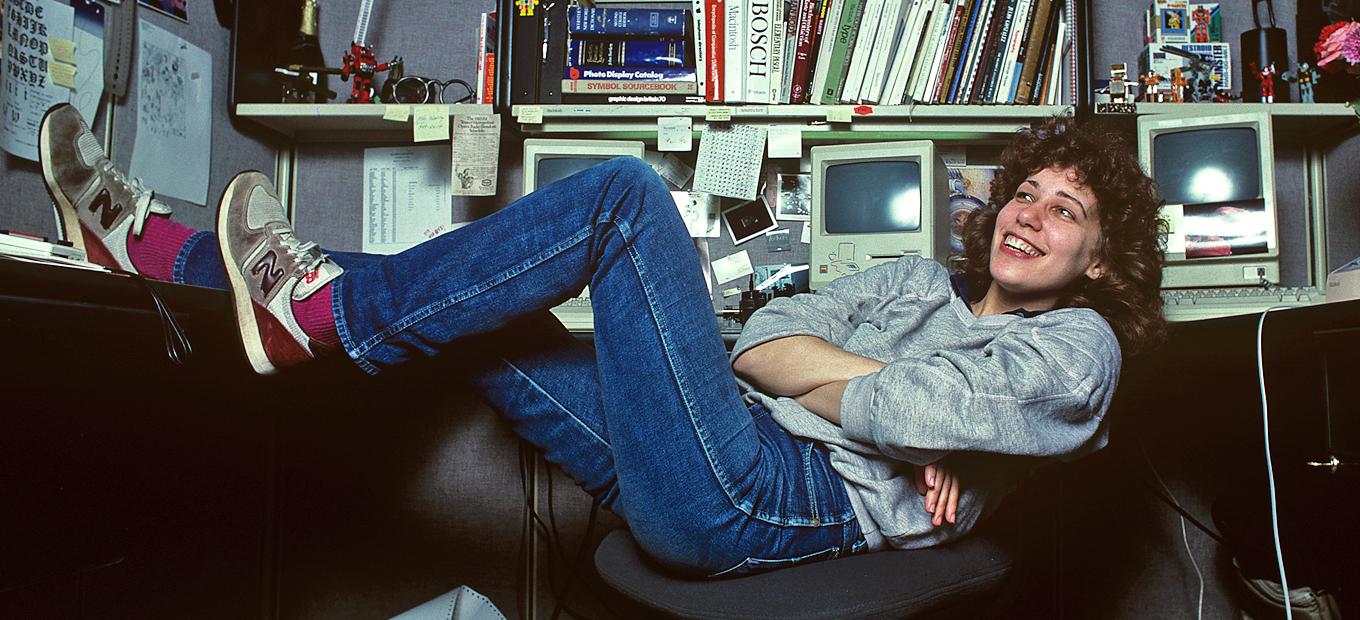This article delves into the creative journey of Susan Kare, exploring her significant contributions to Apple and her role in crafting the iconic card deck for the first digital versions of Microsoft’s entertainment pack, including Solitaire, Freecell, Hearts, and more.
Early Life & Career Beginnings
Susan Kare was born in Ithaca, New York, and grew up with a passion for art. She pursued her artistic inclinations, eventually earning a Ph.D. in Fine Arts from New York University. However, her path took an unexpected turn when she ventured into the world of computers. In the early 1980s, Kare’s friend from high school, Andy Hertzfeld, who was a member of the original Apple Macintosh development team, invited her to join Apple. This marked the beginning of her groundbreaking career in tech design.

Innovation at Apple
At Apple, Kare was tasked with designing the user interface for the Macintosh. With no formal training in computer graphics, Kare relied on her artistic instincts and creativity. She designed each icon on graph paper, meticulously translating abstract concepts into simple, elegant pixel art. Her designs included the iconic smiling Macintosh, the trash can, the lasso, and the Finder icon, among others. These designs were not just visually appealing but also intuitive, helping to make the Macintosh one of the first computers accessible to a non-technical audience.
The Card Deck for Microsoft Entertainment Pack
After her tenure at Apple, Kare continued to leave her mark in the digital world. She was approached by Microsoft to create designs for their new entertainment pack. Among her tasks was to design the card deck for the digital version of classic games like Solitaire, Freecell, and the Hearts card game. Her designs for these games were nothing short of revolutionary, transforming a simple computer program into an engaging visual experience. The deck she created for Solitaire, in particular, became iconic, making the game one of the most popular and recognizable in the world.

Legacy & Influence
Susan Kare’s work extends beyond the pixels she crafted. Her influence is seen in the way designers approach user interfaces today. She demonstrated that technology could be both functional and artistic. Her icons are not just tools for navigation but symbols of a digital revolution that made technology more accessible and human. Today, her work is celebrated in museums and galleries, standing as a testament to the power of design in the digital age.

From the pioneering icons of the Apple Macintosh to the beloved card deck of Microsoft’s Solitaire, Susan Kare’s legacy is a testament to the profound impact of design in technology. Her work bridged the gap between art and technology, creating a user-friendly and visually engaging digital experience.
As we navigate through the sleek interfaces of modern devices, we are experiencing the ripples of Kare’s innovative vision—a vision that revolutionized the way we interact with our machines and with the digital world at large.





